The problem I'm having is filling a div with text using letter-spacing. The main issue is, I don't know the width of the div.
First I was thinking using, text-align= justify, but since that I've been running in the dark and got no clue to how to solve this. I'm guessing some scripting magic might do the trick.
An imgur link giving you an idea what I mean:

<div id="container">
<h1>Sample</h1>
<p>Another even longer sample text</p>
</div>
Here is a link showcasing an example; JSfiddle.